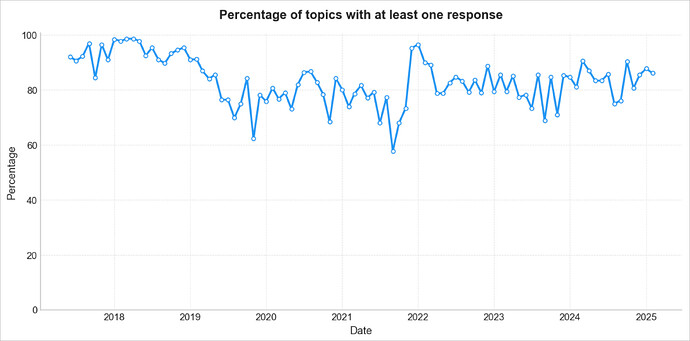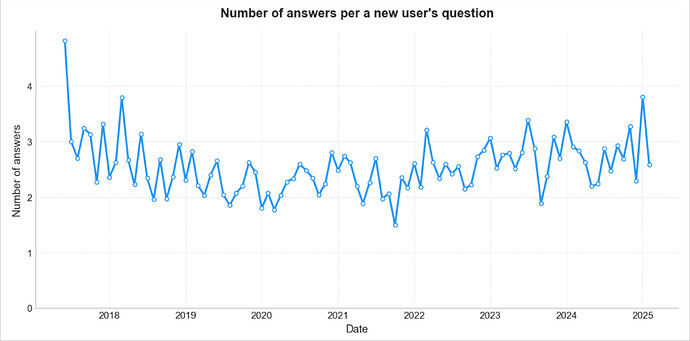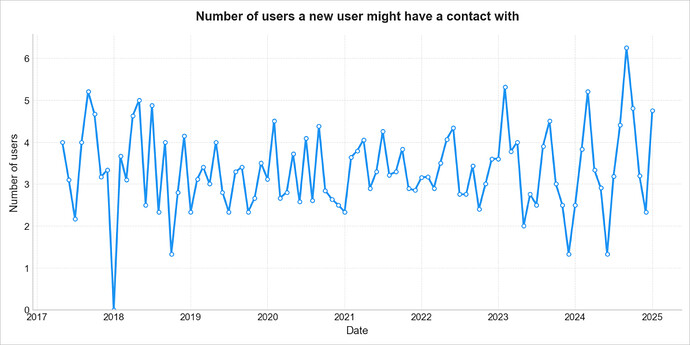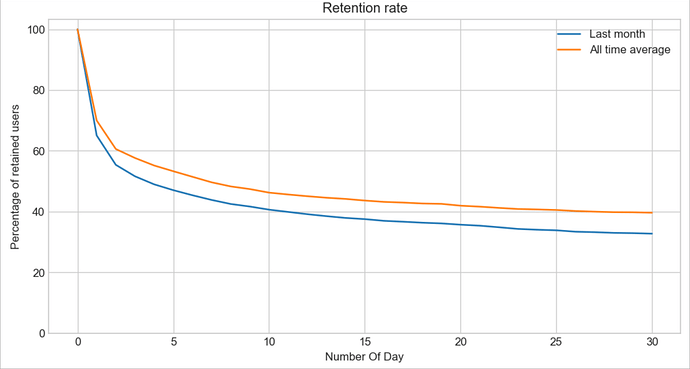Many metrics that we all have heard of came to the community management field from the world of apps and applying them directly to online communities is extremely difficult, if not impossible. One such example is the retention rate. In the classical sense, the retention rate is the number of users who continued to use the application after “N days” from the date of registration. (In most cases, “N days” is equal to “30 days”.)
If you ask me “What is the difficulty in measuring 30-day retention rate for an online community?” I would say that there is no difficulty in measuring, the difficulty is in interpreting. Imagine that you downloaded a game to your phone. After downloading, you will most likely play the game until you lose interest in it, after which you will not use the app anymore and most likely delete it soon. Keeping in mind the fact that people lose interest in mobile games quite quickly, the retention rate will perfectly approximate the processes occurring with the users inside a game.
With online communities, in general, the situation is different. Often people come to a community for help and as soon as they get it, if they themselves are not experts in the topic, they leave the community “until next time”. The next time may happen tomorrow, or in one year, and it does not depend on how good your community is. The reason for coming to the community again to a greater extent will be the emergence of a new problem that corresponds to the topic of your community. Of course, no one will return to a “bad” community, but the main idea here is that in order to return to a good one, a user needs to have a “real problem at hand”, and not just interest.
So, while we still measure retention rate, I would recommend using engagement metrics to get the sense of how many users decided to stay in your community.
Retention in online communities
“But, engagement and retention are different concepts!” you would say. As a result, a question arises, what is the equivalent of customer retention in the context of online communities? It feels like ideologically, the “retention metrics” should somehow characterize the window of opportunity that a community manager has to engage a user (that is, the time from the moment the user acts until the moment we consider the user to have left).
The most reasonable approach in this case seems to me is to measure the values of community parameters that make the greatest contribution to the likelihood of a user returning to the community in the future. If we follow this approach, we first need to divide all users into two types: experts and learners.
Topic Starters (learners)
The main motivation of the learners is to get an answer (if possible, quickly and qualitatively). Hence the following two metrics to look at.
Time to the first response
How we saw earlier, time to since posting a question and getting an answer matters one way or another.
The shorter it is, the better.
Percentage of posts with at least one response
There is one thing that is more important than the time to the first response. It is having a response at all. (Nothing discourages more than absence of an answer.)
Number of answers per a new user’s question
In general, the more answers in a discussion the more engaging it could be (for everyone, not just the topic starter).
Experts
The second most important role in any online community is the role of an expert. Experts are users who help others by answering their questions and participate in discussions. So the two most important metrics to track in this regard are the following.
Number of users with whom a new user might have contact with.
When I worked at Stack Overflow as a community manager I questioned users of many communities about why they decided to stay on the site. All the time among the top three reasons why they participate there was an answer about other experts on the site. That is easy to explain. Social motivation is among the top forces that make people join a community.
Number of discussions a new user has participated in
Another very important factor is the opportunity for users to demonstrate their skills. Until they find some interesting topics to discuss, there is no chance experts will stay in your community.. One of the indirect indicators of this is how many unique discussions a person has taken part in.
Extra: Standard 30-day Retention
If your company has standardized metrics and you must report standard retention rate, you can still do so!
The only recommendation in this case, since in online communities most processes take a long time, I think, the main emphasis of this metric can be made on the last value of the series.
What metrics do you use to measure retention in your community?






